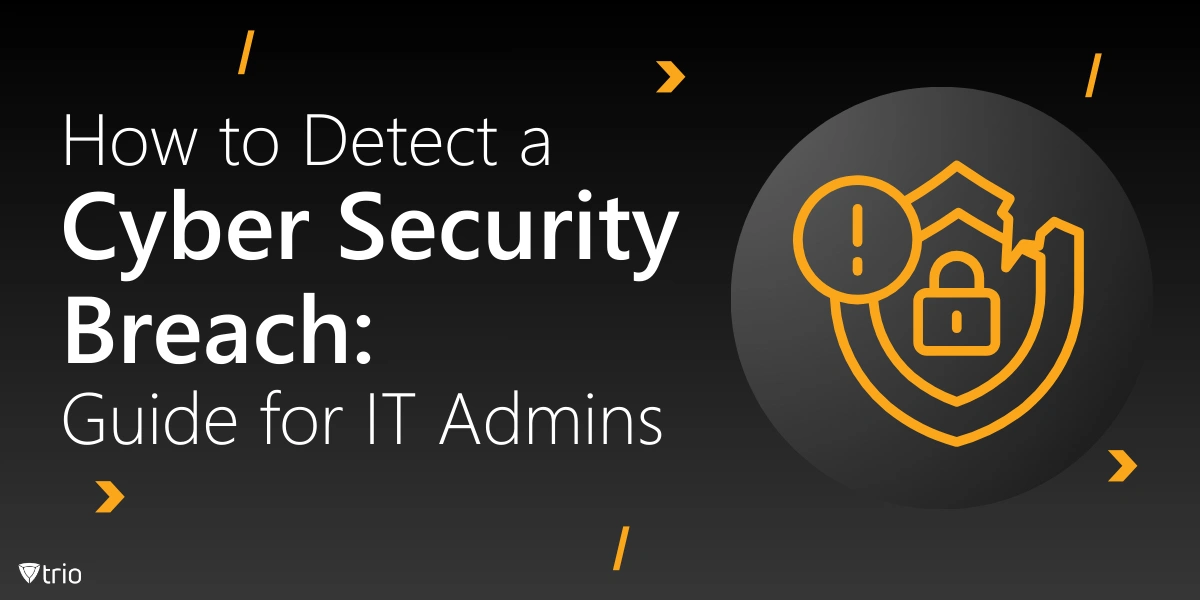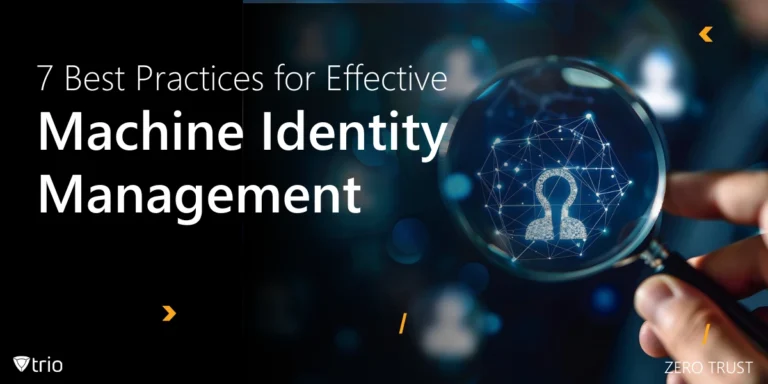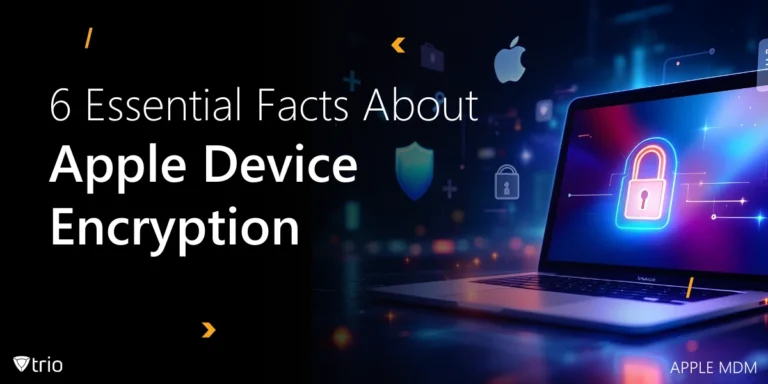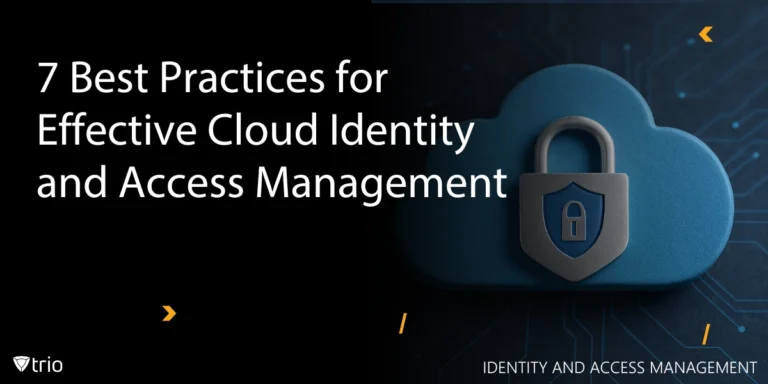Cybersecurity breaches cost businesses millions of dollars annually. According to recent studies, the average cost of a data breach in the United States in 2023 was $9.48 million. Beyond financial losses, breaches lead to reputation damage, identity theft, and loss of customer trust.
For IT admins, detecting a breach quickly is no longer optional—it’s a critical requirement. Modern cyber threats evolve rapidly, and without proactive detection, the impact of security incidents can devastate an organization.
This blog provides actionable insights on how to detect a cyber security breach effectively. By understanding the indicators of compromise, deploying the right tools, and implementing best practices, IT professionals can identify breaches in real time and minimize potential damage.
Common Indicators of a Breach (IOCs)
Understanding the telltale signs of a breach is the first step in protecting your organization. Indicators of compromise (IOCs) offer clues about unauthorized access or malicious activity within your systems. Let’s break these down into system-level and user-level indicators.
System-Level IOCs
Indicators at the system level often point to deeper security concerns. These signs can highlight unauthorized access, malware presence, or an active cyberattack.
Unusual System Activity
- Unexplained resource consumption: If your servers or endpoints suddenly experience high CPU usage, memory drain, or abnormal network bandwidth consumption without any legitimate explanation, it could indicate malicious activity.
- Abnormal login attempts: Frequent failed logins or successful logins from unusual locations and devices may signal an attacker attempting to gain unauthorized access.
- Unexpected software installations or modifications: Keep an eye out for unauthorized programs or changes, especially if they occur outside of scheduled updates or maintenance windows.
File System Changes
- New or modified files: Malware often creates or alters files to establish persistence or exfiltrate data. Watch for suspicious files in unusual directories.
- Encrypted files or directories: Ransomware attacks frequently encrypt critical files, rendering them inaccessible.
- Missing or deleted files: If sensitive files disappear without explanation, it could be a sign of data theft or sabotage.
Network Traffic Anomalies
- Unusual destinations: A sudden increase in outbound traffic to unfamiliar IP addresses or countries is a red flag for data exfiltration attempts.
- Suspicious protocols: The use of uncommon or unauthorized network protocols can indicate malicious activity.
- Large data transfers: Pay close attention to bulk data movements, as they may signify a data leak or exfiltration attempt.
User-Level IOCs
Identifying user-level Indicators of Compromise (IOCs) is crucial for early breach detection. By paying close attention to both behavioral patterns and user-reported anomalies, IT professionals can uncover potential threats before they escalate into full-scale incidents.
Suspicious User Behavior
- Unusual login patterns: Multiple failed login attempts, logins from multiple devices, or logins outside of regular work hours can indicate compromised credentials.
- Opening suspicious attachments: Users downloading or opening unexpected email attachments could trigger a phishing attack or malware deployment.
- Visiting malicious websites: Monitor users accessing untrusted sites, which can lead to malware infections.
User Reports
- Phishing emails: Employees may report receiving fraudulent emails designed to steal confidential information.
- Ransomware demands: Any notification of encrypted data or ransom demands is a clear sign of a breach.
- Unusual system behavior: Employees often notice early signs of a breach, such as sudden crashes or unresponsive systems.
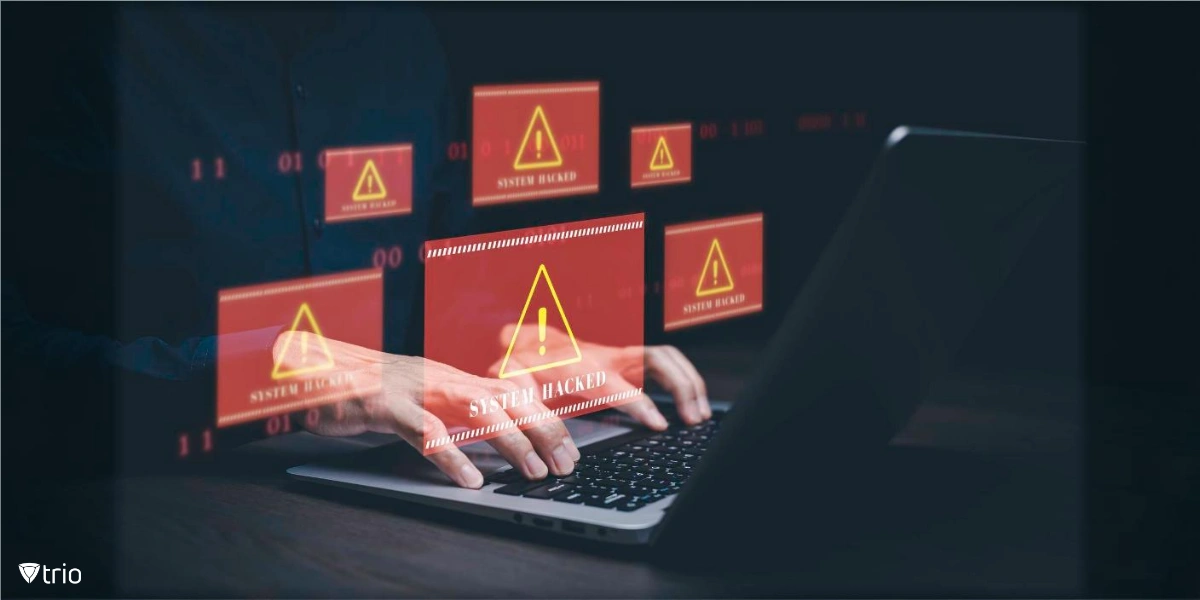
How Can We Detect Cyber Attacks?
Wondering how a data breach is detected? It’s important to know that equipping your organization with the right tools and strategies is essential for effective breach detection. Here are the primary methods IT admins should implement.
Examples of Security Breach Detection Tools
Detection tools provide IT admins with advanced capabilities to identify breaches in real-time.
- SIEM Systems: Centralized logging, real-time alerts, and event correlation.
- EDR Solutions: Endpoint activity monitoring and rapid threat response.
- IDS/IPS: Network traffic monitoring and signature-based threat prevention.
- Vulnerability Scanning: Uncover weaknesses and prioritize fixes.
Security Information and Event Management (SIEM) Systems
- Centralized logging: SIEM solutions aggregate logs from various sources, making it easier to detect anomalies.
- Real-time threat detection: These systems provide immediate alerts for suspicious activities by analyzing log data.
- Correlation of events: SIEM systems link seemingly unrelated events to identify complex attack patterns.
Endpoint Detection and Response (EDR) Solutions
- Endpoint monitoring: EDR tools track workstation and server activity, flagging malware, exploits, or unauthorized changes.
- Rapid response: These solutions enable IT teams to isolate infected devices and mitigate threats quickly.
- Forensic capabilities: Investigating security incidents becomes easier with detailed logs and activity records.
Intrusion Detection and Prevention Systems (IDS/IPS)
- Traffic monitoring: IDS/IPS tools scan network traffic for known attack signatures.
- Active prevention: IPS can block malicious traffic in real time, protecting systems from external threats.
Vulnerability Scanning
- Identify weaknesses: Regular scans uncover system and application vulnerabilities that attackers might exploit.
- Prioritize fixes: Address high-risk vulnerabilities first to minimize exposure.
Regular Backups and Disaster Recovery
- Minimize data loss: Frequent backups ensure that critical data can be restored after a breach.
- Enable business continuity: Disaster recovery plans help maintain operations during security incidents.
Best Practices for Breach Detection
Detecting a breach effectively requires more than just investing in security tools. It demands a strategic, multi-faceted approach to build long-term resilience against cyber threats. Here’s how organizations can strengthen their breach detection capabilities:
Implement a Robust Security Policy
Establishing clear and enforceable security policies is the foundation of a strong cybersecurity posture. Define acceptable user behavior and provide specific guidelines for handling sensitive information. For example, restrict access to confidential data based on user roles, enforce multi-factor authentication (MFA), and mandate the use of strong, regularly updated passwords. Regularly review and update these policies to adapt to emerging threats and evolving business needs.
Employee Training and Awareness
Human error continues to be one of the most exploited vulnerabilities in cybersecurity. Conduct regular training sessions to educate employees about recognizing phishing attempts, safeguarding their login credentials, and reporting suspicious activities promptly. Encourage a culture of accountability and vigilance, where employees feel empowered to act as the first line of defense against potential breaches.
Regular Security Assessments
Proactively identify and address vulnerabilities by conducting regular security assessments. Use penetration testing to simulate real-world cyberattacks and uncover weak points in your network. Pair this with periodic security audits to evaluate compliance with industry standards and readiness to counter threats. These assessments help organizations stay prepared and reinforce their defenses continuously.
Stay Informed About Emerging Threats
Cyber threats evolve at an unprecedented pace, making it vital for IT admins to stay informed. Subscribe to reputable threat intelligence feeds, follow cybersecurity news, and participate in forums or industry groups. By staying ahead of the latest attack vectors and trends, organizations can proactively adjust their defenses to counteract emerging risks.
Incident Response Planning
A well-structured incident response plan is crucial for minimizing the impact of a breach. Develop a comprehensive plan that clearly outlines the roles and responsibilities of every stakeholder during an incident. Regularly test and refine the plan through simulations to ensure your team is prepared to act quickly and effectively when a breach occurs. Swift action can significantly reduce downtime and limit financial and reputational damage.
Integrate Cybersecurity Insurance
While preventative measures are essential, it’s equally important to prepare for the financial impact of a breach. Cybersecurity insurance offers coverage for recovery costs, legal fees, and potential losses incurred during a cyber incident. It acts as a safety net, enabling businesses to recover more effectively from significant breaches and protect their bottom line.
By implementing these best practices, organizations can strengthen their defenses, enhance breach detection capabilities, and build a resilient cybersecurity framework.

How Trio Can Help Detect Cyber Security Breaches
Trio, a simplified Mobile Device Management (MDM) solution, offers powerful tools to detect and respond to cyber security incidents.
- Real-time monitoring: Trio continuously tracks device activity for signs of unauthorized access or malware.
- Data protection: Safeguard customer data, financial information, and confidential files by enforcing security policies across all devices.
- Streamlined incident response: Trio enables IT teams to quickly isolate compromised devices and address breaches effectively.
- Comprehensive reporting: With Trio’s detailed logs and analytics, identifying trends and strengthening defenses becomes effortless.
Additionally, Trio supports IT risk management and cyber threat management, ensuring vulnerabilities are addressed before attackers gain a foothold. Combined with features that facilitate vulnerability management, Trio becomes an indispensable tool for IT admins.
Ready to enhance your breach detection capabilities? Schedule a free demo with Trio.
Conclusion
Cyber security breaches are inevitable, but their impact can be mitigated with proactive detection and response. By recognizing indicators of compromise, deploying advanced tools, and adhering to best practices, IT admins can safeguard their organizations from financial losses, data leaks, and reputational harm.
Act now to implement these strategies and strengthen your defenses against cyber threats. Remember, early detection is the key to minimizing the impact of security incidents.
Get Ahead of the Curve
Every organization today needs a solution to automate time-consuming tasks and strengthen security.
Without the right tools, manual processes drain resources and leave gaps in protection. Trio MDM is designed to solve this problem, automating key tasks, boosting security, and ensuring compliance with ease.
Don't let inefficiencies hold you back. Learn how Trio MDM can revolutionize your IT operations or request a free trial today!
